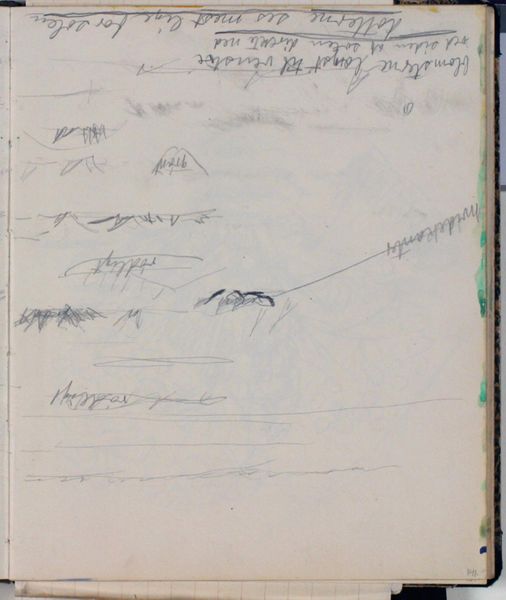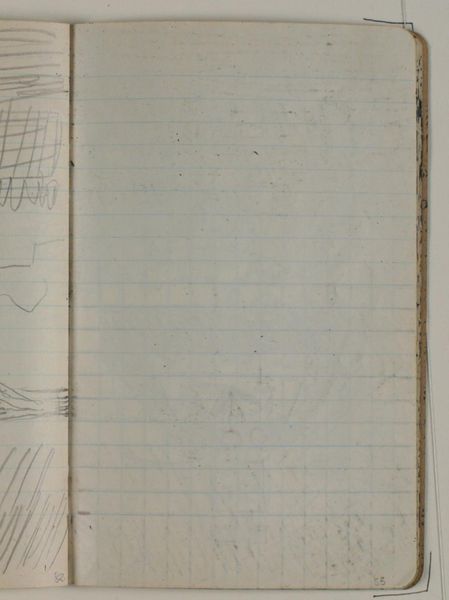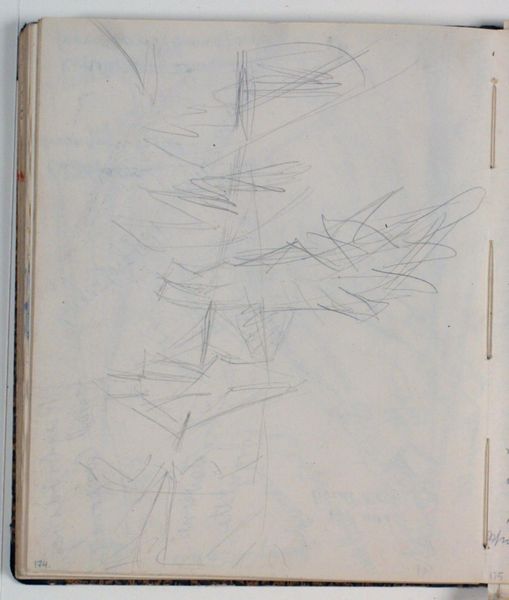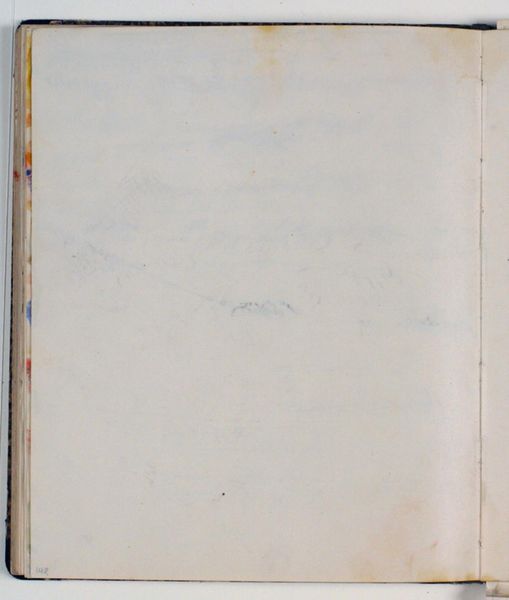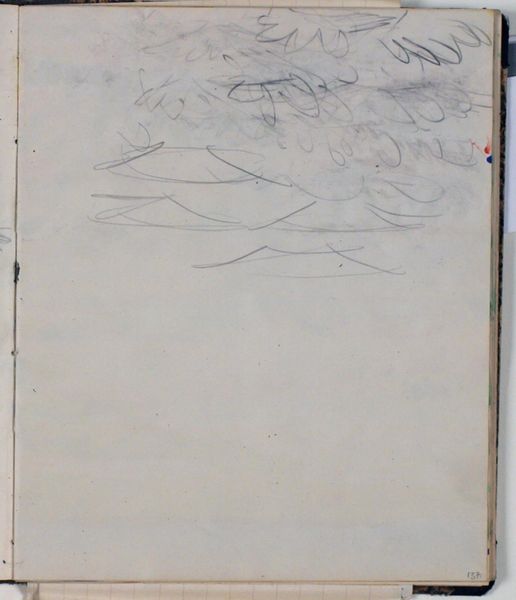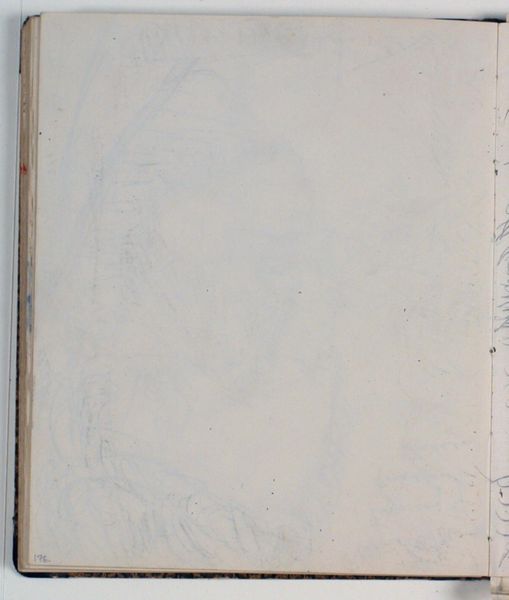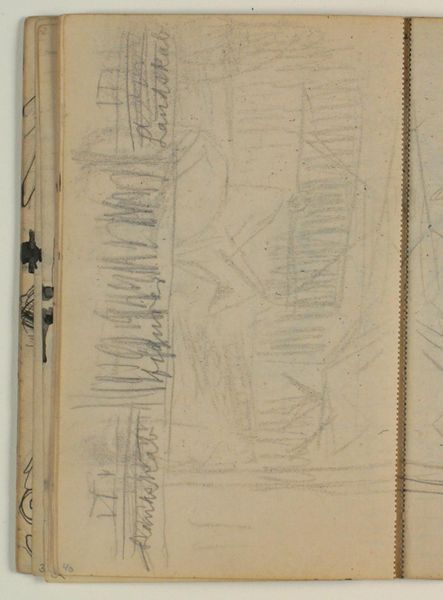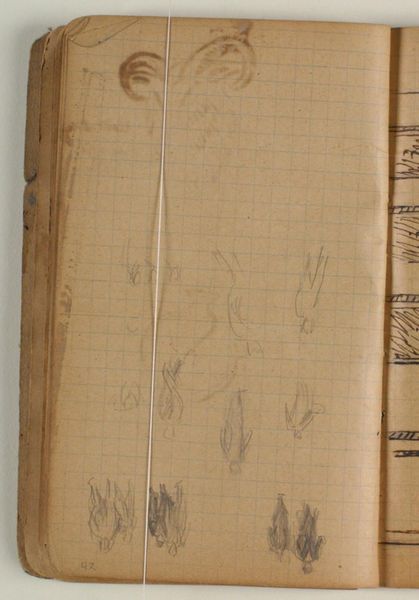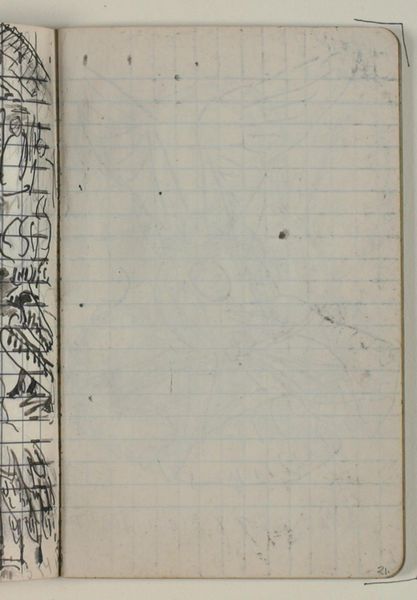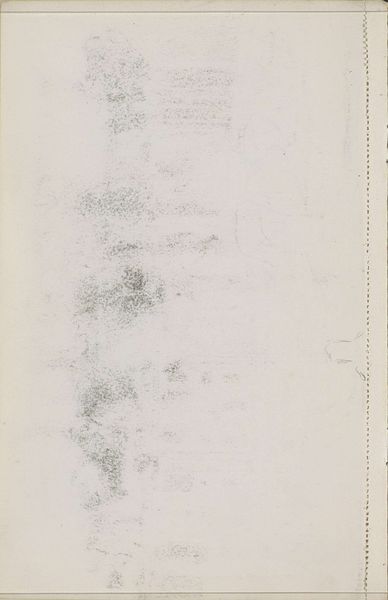
drawing, paper, pencil
#
drawing
#
paper
#
pencil
#
abstraction
#
line
Dimensions: 226 mm (height) x 185 mm (width) x 112 mm (depth) (monteringsmaal), 221 mm (height) x 184 mm (width) (bladmaal)
Editor: We're looking at "Landskabsstudie. Farveangivelser," a landscape study with color notations by Niels Larsen Stevns, made between 1930 and 1936 using pencil on paper. It feels so fleeting and almost illegible, like a hidden code. What do you see in this piece, beyond a simple landscape study? Curator: This drawing isn't just a landscape study; it’s a radical act of documentation, almost like a pre-digital form of "tagging" the land. Stevns uses these notations to mark his presence, his understanding of the power dynamics inherent in representing nature. Editor: Power dynamics? Curator: Yes, consider the context. Landscape art has historically been linked to ownership, colonialism, and the male gaze. By disrupting the traditional picturesque view with these abstract notations, Stevns hints at a deconstruction of that authority. The illegibility, as you mentioned, subverts easy consumption. It withholds. Who gets access to the "code" of nature? Is it about understanding or control? Editor: That’s a fascinating point. So the act of *not* clearly depicting the landscape is a statement in itself? Curator: Exactly. The lines themselves become almost like territorial markings, raising questions about how we impose our interpretations on the natural world. Is this a critique of how we perceive and ultimately exploit the environment, filtered through the artist’s lens and time? Editor: I never considered it that way. I thought it was just a sketch. Curator: And that’s the brilliance, isn't it? Art can be both beautiful and subversive. Editor: Definitely something to think about as we move through the exhibition. Thanks for opening my eyes.
Comments
No comments
Be the first to comment and join the conversation on the ultimate creative platform.
